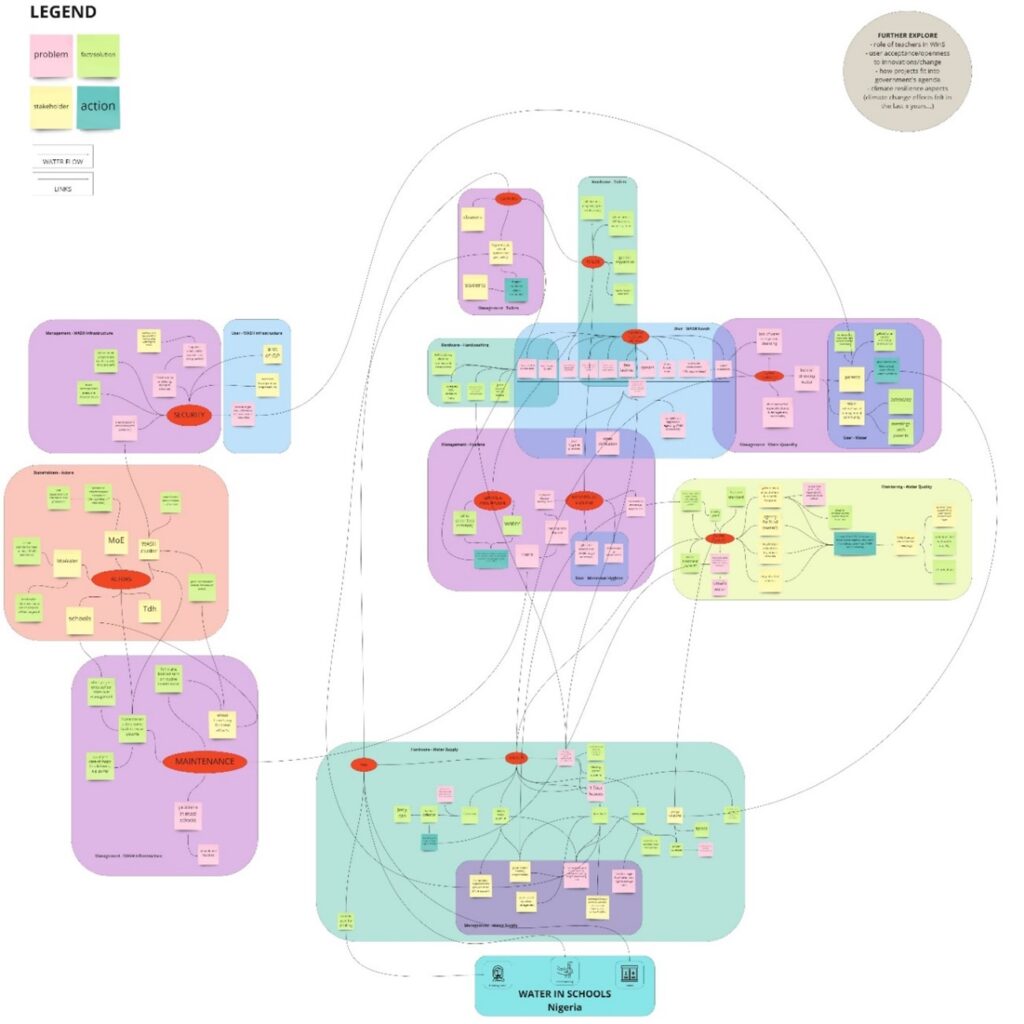Theory of Change
Theory of Change: an overview
The Theory of Change (ToC) approach is a methodology to better understand the complexity of reality.
Humanitarian and development contexts are systems with a certain degree of complexity. Instead of breaking the system into smaller pieces, the ToC approach analyses it as a whole, following a systems thinking logic. The focus is not only on the actors and elements involved but also on the interactions among them and on the networks within they are embedded. The Theory of Change assumes that pieces will work differently in different contexts, because they interact with each other in different ways. Thus, adaptation is necessary.
Based on this, the main goal of the hands4health ToC is to gain clarity by:
- Understanding how the WASH system is working in primary schools and clinics in the project countries;
- Identifying the interplay of actors and factors that shape the overall system dynamic;
- Building a map that captures the forces that drive the system’s behaviour.
The idea is that the ToC serves as a guiding tool for the hands4health interventions and next steps, as well as for understanding and assessing the context in the project countries.
The hands4health ToC process
A ToC is a continuous learning process that should be implemented in a gradual, participatory approach. Workshops, interviews, and focus group discussions with project staff, stakeholders and beneficiaries are different tools used to reach these goals.
In the case of hands4health, the ToC process has been continued throughout the project duration and fully integrated into the systemic approach developed and implemented by the project. Both processes – ToC and systemic approach – provide feedback to each other. The ToC is meant to: (i) Investigate the whys behind the problems and challenges identified in the approach; (ii) Enable the exploration and identification of the root causes to these issues; and, (iii) Provide a base for testing pathways to change based on the project actions.
Implementation process
The ToC implementation process of the hands4health project followed these broad steps:
- Developing rich picture maps that displayed the broad, complex local WASH system in schools and health care facilities of the project countries.
- Polishing the maps by removing duplicate information, categorising the inputs, verifying the linkages between elements and identifying the main problems/gaps as well as areas that needed further discussion.
- Creating problem trees to determine the why’s and root causes behind the problems identified in the systemic approach and rich picture maps.
- Building an interactive ToC map in kumu, by transitioning the rich picture maps from miro into the kumu software, which enables the user to explore the different domains of the map through filter options, verify how the elements are interlinked and learn more through the description cards.
- Mapping the domains of action, i.e. the hands4health project actions in each country.
- Layering the domains of action on top of the ToC to identify the areas of the map that were covered by the hands4health intervention.
- Continuously updating the maps based on the main challenges and learnings from the field, results obtained, inputs from stakeholders, as well as changes in context.



Using the maps as a tool
The ToC maps enabled the team to better understand the broad, complex system in which the project is inserted. They shed light on the different actors and factors present, and on how these interact with each other and influence the system’s dynamic. They also highlighted important gaps regarding the WASH systems in health centres and schools in the project countries, as well as potential opportunities and solutions to address them. This helped the team in the identification of the root causes to the main problems raised, which led to the adaptation of the hands4health intervention to address some of these issues.
The layered maps enabled the project team to monitor the areas covered by the intervention and, at the same time, visualise those that remained uncovered. This brought up an important reflection around the following questions: Which other organisations/initiatives are present in the context? Do they cover the areas that hands4health does not address? Are there actors we could inform and/or push towards change? This reflection, together with the mapped information, served as base for the development of the stakeholder engagement and communications strategy of the project.
More information
Skat Foundation and FHNW are the leading partners facilitating the ToC process within the hand4health project.
The hands4health project will release a fact sheet on the ToC process soon, to enable it to be replicated within other contexts.